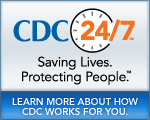MMWR
Morbidity and Mortality Weekly Report
MMWR News Synopsis for August 27, 2009
- 2009 Pandemic Influenza A (H1N1) Virus Infections a€“ Chicago, Illinois, April-July 2009
- Surveillance for the 2009 Pandemic Influenza A (H1N1) Virus and Seasonal Influenza Viruses a€“ New Zealand, 2009
- National, State, and Local Area Vaccination Coverage Among Children Aged 19-35 Months a€“ United States, 2008
There is no MMWR telebriefing scheduled for August 27, 2009.
2009 Pandemic Influenza A (H1N1) Virus Infections a€“ Chicago, Illinois, April-July 2009
Press Contact: Tim Hadac, Chicago Department of Public Health
(312) 747-9805
Because of the high attack rate of novel influenza A (H1N1) among children and young adults, they should be among first groups targeted for prevention, immunization, surveillance, diagnostic, treatment and education strategies in the fall. In a CDC report published today, the Chicago Department of Public Health is reporting a summary of the 1,557 novel influenza A (H1N1) cases that occurred among city residents during April through July. They found that the rates of novel H1N1 infection were highest among children and young adults, particularly children 5 to 14 years old who had 14 times higher rates than adults older than 60 years. These findings suggest that disease prevention efforts should focus on children and young adults, who are at a disproportionate risk for infection and hospitalization. In accordance with recent recommendations from the Advisory Committee on Immunization Practices (ACIP), this population should be among the first groups targeted for vaccination with influenza A (H1N1) 2009 monovalent vaccine (when available).
Surveillance for the 2009 Pandemic Influenza A (H1N1) Virus and Seasonal Influenza Viruses a€“ New Zealand, 2009
Press Contact: Sue Huang, Head, WHO National Influenza Centre
+64 4 529 0606
When pandemic (H1N1) 2009 co-circulated in New Zealanda€?s winter season, it overtook seasonal influenza rapidly and became a predominant strain within one month.
National, State, and Local Area Vaccination Coverage Among Children Aged 19-35 Months a€“ United States, 2008
Press Contact: CDC, Division of Media Relations
Phone: (404) 639-3286
In 2008, 90 percent coverage was achieved for all the vaccines in the combined 4:3:1:3:3:1 series except for ≥4 doses of DTaP (84.6 percent). Decline in coverage for a‰¥3 doses of Hib was likely due to the shortage. Coverage of children living below poverty was lower than coverage of children living at or above poverty. The 2008 National Immunization Survey 2008 estimated vaccination coverage among children aged 19a€“35 months for 50 states and selected local areas, born during January 2005a€“June 2007. In 2008, 4:3:1:3:3:1 series coverage was 76.1 percent and a‰¥90 percent coverage was maintained for recommended doses for five of the six series vaccines. Coverage with ≥3 doses of Haemophilus influenzae type b vaccine (Hib) decreased from 2007, likely because of the shortage of Hib vaccine and the recommendation to defer the routine Hib vaccine booster dose administered at age 12a€“15 months. Coverage varied substantially among states/local areas. While coverage varied little among racial/ethnic groups, coverage remained lower for children living below poverty than children living at or above poverty for most vaccines.
####
- Historical Document: August 27, 2009
- Content source: Office of Enterprise Communication
- Notice: Linking to a non-federal site does not constitute an endorsement by HHS, CDC or any of its employees of the sponsors or the information and products presented on the site.
View Press Releases in
Get e-mail updates
To receive e-mail updates about this page, enter your
e-mail address:
Contact Us:
- Centers for Disease Control and Prevention
1600 Clifton Rd
Atlanta, GA 30333 - 800-CDC-INFO
(800-232-4636)
TTY: (888) 232-6348 - Contact CDC-INFO


